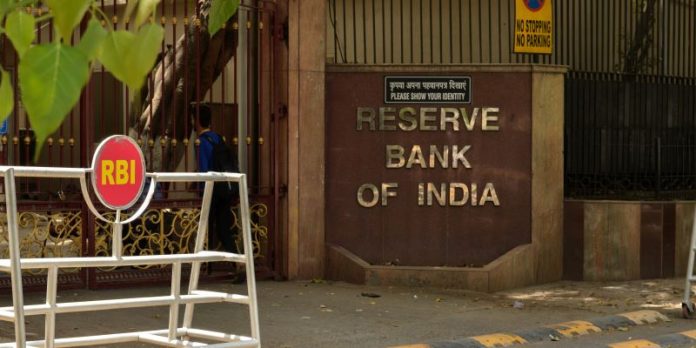Rate cut may not lead to any transmission to borrowers as the banking system remains watchful.
BizNewsConnect presents comments from the BFSI sector on the Reserve Bank’s latest monitory policy announvcement.
Dhawal Dalal, President & CIO-Fixed Income, Edelweiss MF: As widely expected, the MPC has cut the Repo Rate by 25 bp to 6.25%. However, there was no forward guidance on policy rates. The stance is maintained at neutral. The RBI Governor has promised liquidity support as and when needed. That probably means the banking system liquidity will be proactively managed in Q4FY25.
Sandeep Bagla, CEO, TRUST Mutual Fund: Monetary easing is the need of the hour, from a trying to revive the economy perspective. For monetary easing to be effective, more rate cuts are needed for a long period of time. Liquidity needs to be easy as well. I feel that the inflation projection of 4.2% for FY26 is a tad optimistic. I expect further rate cuts of 50 bps during the year. It is a bold move by the RBI.
The short-term funds are likely to perform better. Long end of the curve will move lower once the inflation battle is won, which is some time away. There is pressure on currency as well, which will make interest rates volatile, though within a range.
Ashwani Dhanawat – ED and Chief Investment Officer, Shriram General Insurance: The Reserve Bank of India’s decision to cut the repo rate by 25 basis points to 6.25% is a welcome and expected move that aligns with market predictions, providing much-needed support for economic growth. As the government pursues fiscal consolidation, aiming for a fiscal deficit of 4.8% of GDP for the current year and targeting a further reduction to 4.4% in 2025-26, this rate cut reflects a proactive approach to fostering a conducive environment for investment and boosting consumer confidence. Despite ongoing concerns over inflation, particularly with a weakening rupee, this adjustment underscores the RBI’s commitment to balancing growth with fiscal stability. With the economic growth estimate for FY26 now at 6.7%, this strategic decision is likely to enhance the overall economic outlook and promote a sustained recovery in the year ahead.
Anu Aggarwal, Head of Corporate Banking, Kotak Mahindra Bank: The Reserve Bank of India’s decision to reduce the repo rate by 25 basis points underlines its contribution in stimulating economic growth. The monetary policy decision will further support the Union Budget’s focus on boosting demand which will together reinforce growth and confidence in the economy. The RBI’s decision has come at an opportune time as India attempts to gets into it high growth trajectory as against the 6.4% of FY25.
Tarun Singh, Founder and MD, Highbrow Securities: My critical reading of this is that while the rate cut is a welcome step to stimulate growth, the RBI’s cautious ‘neutral’ stance and reliance on inflation projections may limit the scope for aggressive monetary easing. The MPC’s decision to remain watchful of global financial market volatility, geopolitical tensions, and adverse weather events underscores the fragility of the current recovery. However, the RBI’s emphasis on maintaining a durable alignment of inflation with the 4% target, while supporting growth, appears overly conservative given the tepid industrial growth and persistent drag from external headwinds. The projected GDP growth of 6.7% for FY26, though optimistic, hinges on favourable rabi prospects and a recovery in private consumption, which may be undermined by global trade uncertainties and commodity price volatility. Thus, the RBI’s approach, while prudent, risks being reactive rather than proactive in addressing the structural slowdown in growth.
Mahendra Kumar Jajoo, CIO Fixed Income at Mirae Asset Investment Managers (India): In line with the market consensus, MPC reduced key policy repo rate by 25 bps. Keeping in mind the prevalent volatile geopolitical situation, stance has been retained as neutral. Guidance seems to be of further rate cuts in coming quarters. While GDP growth forecast is at 6.7% for FY26, up marginally from 6.6% at the last meeting, inflation projections are revised downward to 4.5% vs 4.8% in previous review. Further there is strong guidance for providing adequate liquidity including injecting durable liquidity which typically indicates more open market purchase operations of dated securities. Thus, policy is a positive response to meaningful fiscal consolidation and guide path in the union budget and seems to set the tone for a deeper easing cycle and possibly more rate cuts to follow. Fixed income markets should witness further strengthening of ongoing momentum and bond yields are expected to ease further in coming months.
Parijat Agrawal, Head of Fixed Income at Union Asset Management Company Private Limited: The Monetary Policy Committee (MPC) has, as anticipated, lowered the policy rate by 25 basis points. We foresee a shift towards a more accommodative policy stance in the future, with an additional reduction of 25 basis points likely by June 2025. The Reserve Bank of India (RBI) did not introduce any new liquidity measures; however, we anticipate that the RBI will ensure adequate durable liquidity as necessary. Additionally, the refinement of the inflation targeting model seems to be a welcome measure. The cost-benefit analysis of regulations could be positive for the markets.”
Lakshmanan V, Group President & Head – Treasury (treasurer), Federal Bank: The MPC was on reasonably expected lines on all counts – Rate cut, stance and statement on liquidity measures. This decision in my view was a logical extension to the liquidity measures taken in Jan, along with clear assurances given by RBI to support liquidity whenever necessitated going forward. Todays outcome sets the stage for rate cut expectations in April, unless the Inflation and global macro play havoc.
Upasna Bhardwaj, Chief Economist, Kotak Mahindra Bank: The MPC’s decision to cut Repo rate by 25bp and maintain neutral stance is completely in line with our expectations. The softening growth and inflation outlook has provided room to monetary easing. Further from here , we expect the RBI will need to monitor liquidity conditions more closely to ensure liquidity stance remains in sync with the policy stance.
Kishore Lodha, Chief Financial Officer, UGRO Capital: The much-awaited rate cut has finally arrived, easing interest rate pressure on the industry as a whole and providing relief to home loan borrowers. However, liquidity has turned negative, which remains a cause for concern. The RBI is closely monitoring the situation and implementing measures to mitigate the risk. Inflation has moderated, and the RBI expects it to average 4.2% next year, creating further room for additional rate cuts. Key factors to watch include geopolitical developments, Rabi and Kharif crop yields, GDP growth, and inflation trends.
Siddarth Bhamre, Head of Research at Asit C Mehta Investment Interrmediates: As Sanjay Malhotra picked up the baton of RBI governor, he and his new team started their first policy with a rate cut of 25 bps. The previous team has been successful in bringing inflation near the desired number of 4%. Domestic macro factors pertaining to vegetables and crops suggest food inflation to remain under control.
The rural economy has been showing healthy growth, however urban consumption has moderated. Though GDP growth has been revised downwards, the governor believes that improving employment conditions, the outcome of the union budget and moderating inflation should aid the growth into fixed investment.
The global environment remains unpredictably dynamic and hence MPC has maintained its neutral stance so as to flexibly steer the growth-inflation mix as the global situations evolve.
We believe this rate cut may not lead to any transmission to borrowers as the banking system remains watchful on the liquidity front.
Nirav Choksi, CEO & Co-Founder, CredAble: For small businesses, access to capital has always been about speed, flexibility, and sustainability. The 25-bps rate cut lowers the cost of funds, but the real opportunity lies in how FinTechs enhance credit limits for MSMEs. Traditional static limits don’t reflect business realities—fluctuating revenues, seasonal demand, and evolving cash flow needs.
The future is dynamic credit allocation, where FinTechs use real-time transaction data, AI-driven risk assessment, and automated cash flow insights to adjust limits proactively.
FinTechs can strengthen supply chain financing by enhancing liquidity across B2B ecosystems with flexible financing, allowing suppliers and distributors to access credit seamlessly at better terms. The opportunity now is to create tailored financing solutions that align with cash flow realities, ensuring that MSMEs don’t just survive economic shifts—they thrive in them.
Laukik Bagwe, Head Fixed Income, ITI Mutual Fund: The MPC has prioritized domestic growth through effective liquidity management while remaining vigilant about external economic factors.




